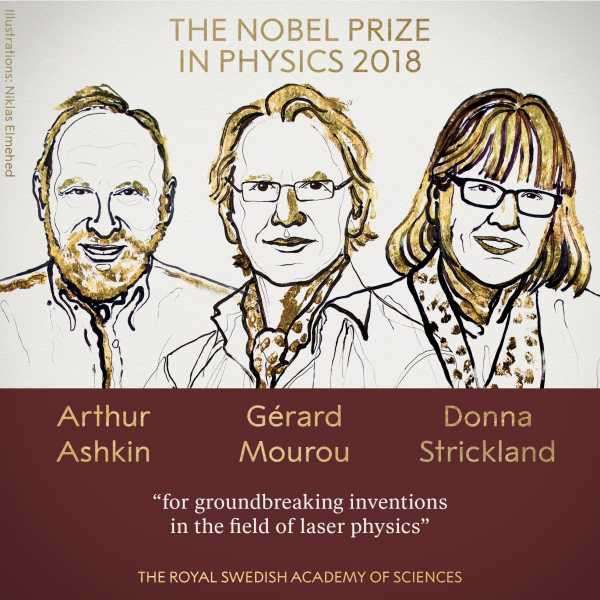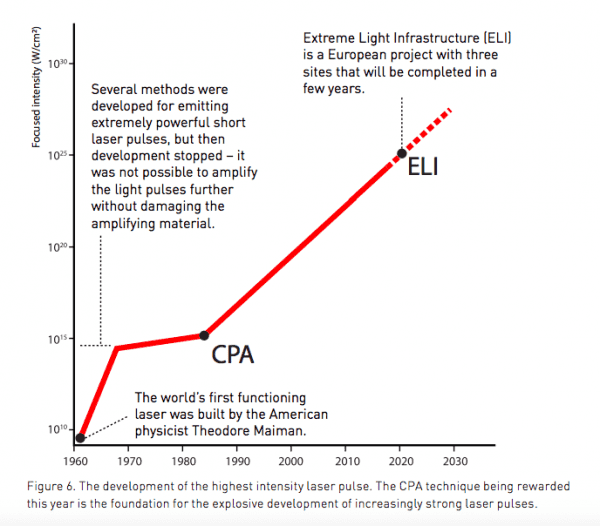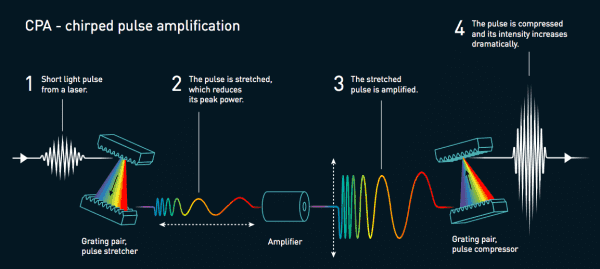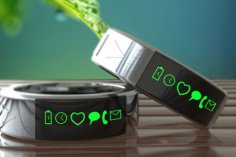
The 2018 Nobel Prize in physics has been awarded to three scientists — including one woman — for advancing the science of lasers and creating extremely useful tools out of laser beams.
The winners include Arthur Ashkin, 96, a retired American physicist who worked Bell Labs; Gerard Mourou, 74, now at the École Polytechnique in France and University of Michigan; and Donna Strickland, 59, now at the University of Waterloo in Canada.
These scientists are responsible for two important inventions. One is laser tweezers, which allow scientists to manipulate microscopic particles (often viruses and bacteria) within a laser beam. The second is a technology that led to the rapid increase of laser beam intensity, which has allowed for myriad laser-based tools, including the beams commonly used in laser eye surgery.
Ashkin, who took half of the $1 million prize, invented the optical (laser) tweezers in his work with Bell Labs in the 1980s. Mourou and Strickland worked on laser amplification at the University of Rochester, also in the 1980s.
Astonishingly, Strickland is just the third woman to have ever won the Nobel Prize in physics. The prize has not been awarded to a woman since 1963 when Maria Goeppert-Mayer won for her work on atomic structure. That was 55 years ago! The only time a woman was awarded the prize before that was in 1903 when Marie Curie won for her work on radioactivity.
During the Nobel Prize press conference Tuesday morning, Strickland was reminded by a reporter that she was the just third woman to win, and immediately responded, “Is that all, really? I thought there might have been more.”
She went on: “We need to celebrate women physicists because we’re out there. Hopefully, in time, it will start to move forward at a faster rate.” The Nobel Committee has long been criticized for neglecting to honor women (who have been denied prizes, despite being behind some incredible discoveries in recent decades).
Why laser physics is worthy of a Nobel Prize
The Nobel Prizes award discoveries and inventions that lead to the betterment of humanity. Strickland, and co-inventor Gerard Mourou, did just that. After lasers, which are focused beams of photons (i.e. light), were first invented in the 1960s, the power and intensity they could reach quickly plateaued. That’s where Strickland and Mourou came in.

They realized that, through a series of steps that involve stretching, amplifying, and then compressing the beams, they could greatly increase their intensity. The breakthrough, called chirped pulse amplification, was published in 1985 and was Strickland’s first published scientific work. (Mourou was her supervisor at the time and they worked on the project together.)
“The CPA-technique invented by Strickland and Mourou revolutionized laser physics,” the Nobel Committee writes in a press release.

These high-intensity lasers have been used in a huge array of applications: drilling, cutting, data storage, manufacturing, and surgery (like eye surgery to correct vision).
Ashkin, who was awarded half of the prize, also invented a highly transformative tool. In the 1980s, he led a team at Bell Labs that realized that tiny micrometer-size spheres would be drawn into the center of a laser beam (not so unlike the tractor beams of science fiction stories).
Adding a lens to focus the beam into a smaller area, Ashkin was able to essentially create a vise out of the laser to hold on to the tiny particles.

These “light traps” can hold on to individual atoms. He also discovered that bacteria and viruses could be held in its grip. “In many laboratories, laser tweezers are therefore standard equipment for studying biological processes, such as individual proteins, molecular motors, DNA or the inner life of cells,” the Nobel Prize press release states.
Today’s prize announcement is historic. But the Nobel Committee has a long way to go to catch up in recognizing women scientists. (And they’ve had missed opportunities, like failing to honor Vera Rubin for her discovery of dark matter before she died and became ineligible to win the award.)
The institutions of science, overall, need to do a better job of making women feel welcome. Just this week, a CERN (European Organization for Nuclear Research) scientist made headlines when he declared “physics was invented and built by men, it’s not by invitation” at a scientific conference.
In January, the Pew Research center published a report that found 50 percent of women working in STEM (science, technology, engineering, and math) have experienced gender discrimination on the job, and 36 percent say sexual harassment is a problem in their workplace.
Today’s prize was just a small step to increase the visibility of women in physics. More need to come.
Sourse: vox.com





